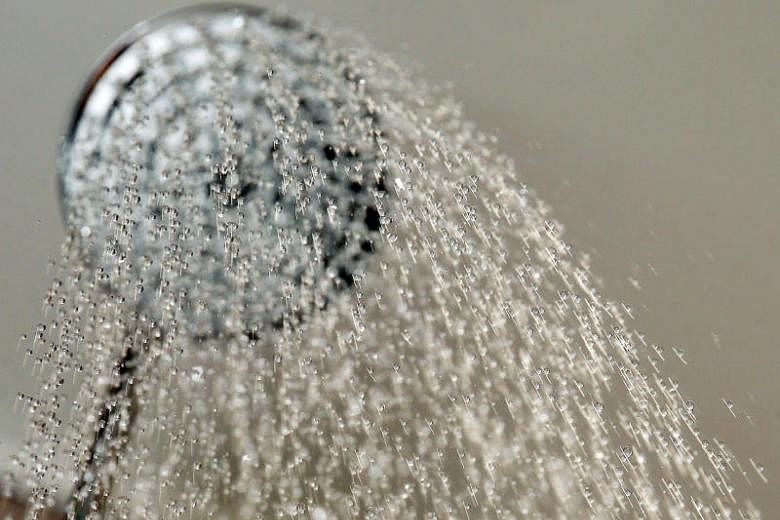SINGAPORE - When temperatures rise, lower-income households here use more water whereas higher-income households consume more electricity, a local study has found.
The study tracked the water and electricity bills of about 130,000 households staying in apartments from September 2012 to December 2015.
It found that with a 1 deg C increase in temperature, the average household living in a two-room apartment increases water use by 9 litres per day.
At the time of the study, less than a fifth of two-room apartments had air-conditioning.
In contrast, heat induces larger shifts in electricity demand but no significant change in water consumption among higher-income households, such as those staying in five or six-room apartments (including executive flats and condominiums) where air-conditioning is prevalent.
These households averaged an increase in electricity demand of 2 kilowatt hours per day per additional 1 deg C, which is equivalent to operating an air-conditioning unit for two more hours each day.
The study was conducted by Associate Professor Alberto Salvo from the Department of Economics at the National University of Singapore (NUS).
It was published on Thursday (Dec 20) in the journal Nature Communications.
"As we face shifting temperature extremes and rainfall variability, the study can contribute towards improving demand forecasting for water and electricity in water-stressed cities in tropical Asia, where incomes are rising," he said.
"This can facilitate better design and allocation of water and electricity grids. Air-conditioners powered by electricity generated from burning fossil fuels come at an environmental cost, but one added benefit is that they may reduce a household's water demand when seeking relief from heat."
Previous research has found that residents of one- or two-room apartments have a mean annual household income per person of US$9,300 (S$12,745), and air-con adoption is only 14 per cent.
At the other end of the socioeconomic distribution scale, condominium apartments are characterised by a mean household income per person of US$68,900, and air-con penetration is 99 per cent.
To complement the observational evidence from the study, 300 people living in apartments were also surveyed in September on heat relief behaviour.
According to the survey, 39 per cent of respondents said that they shower more often and longer on a very hot day while 36 per cent indicated that they would turn on the air-conditioner.
Prof Salvo will conduct further studies to explore whether the findings for Singapore can be extended to urban populations in other cities in tropical Asia, such as Mumbai and Jakarta, with different climates or levels of economic development.


